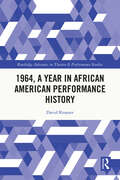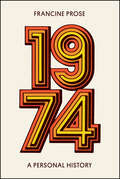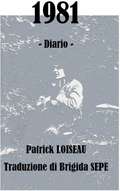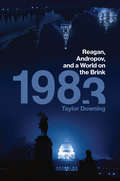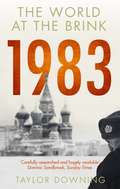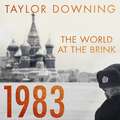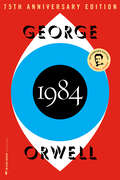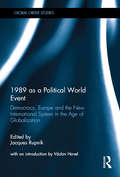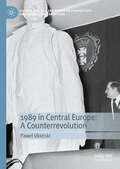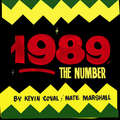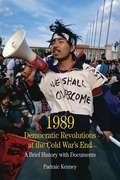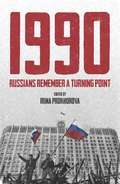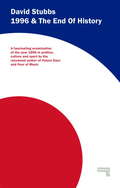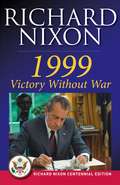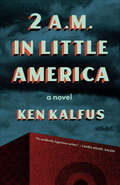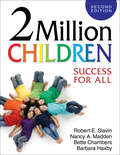- Table View
- List View
1964, A Year in African American Performance History (ISSN)
by David KrasnerThis book examines the Civil Rights Movement from the perspective of a single year, 1964.The book analyses specific events that occurred in 1964 as benchmarks of the Civil Right Movement, making the case that 1964 was a watershed year. Each chapter considers individually politics, rhetoric, sports, dramatic literature, film, art, and music, breaking down the events and illustrating their importance to the social and political life in the United States in 1964. This study emphasizes 1964 as a nodal point in the history of the Civil Rights Movement, arguing that it was within this single year that the tide against racism and injustice turned markedly.This book will be of great interest to the scholars and students of civil rights, theatre and performance, art history, and drama literature.
1966: De Illia a Onganía. El preludio de la argentina violenta
by María Sáenz Quesada1966 es el año del golpe que derroca a Illia y hiere de muerte a la democracia en la Argentina. Al mismo tiempo condensa las contradicciones de una época en la que, en medio de una ebullición cultural inédita y un cambiante clima de ideas, se presagia la violencia política que ensangrentará los años setenta. El clima de desdén cívico en que se gesta y produce el golpe militar que el 28 de junio de 1966 destituye al presidente Arturo Umberto Illia es apenas uno de los emergentes del acelerado deterioro que venía experimentando la relación de la sociedad argentina con la política en general y con la democracia en particular. Pero 1966 es mucho más que ese golpe de Estado que hiere de muerte a las instituciones y contribuye a crear las condiciones de posibilidad de la creciente naturalización de la violencia política que opera como preludio de la sangrienta dictadura que se instalará en el poder diez años después. En efecto, 1966 es también un nudo histórico de contradicciones en el que se cruzan la pugna interna del sindicalismo peronista, la intervención de las universidades, el impacto del Concilio Vaticano II y la Conferencia Tricontinental de La Habana, la efervescencia cultural del Di Tella y la diplomacia en torno de Malvinas. Tras el éxito de 1943, María Sáenz Quesada vuelve a un año bisagra de la historia argentina que, al recordar el valor de la democracia como único escenario capaz de aportar al bien común y realizar el bienestar general, le habla, como pocos, al presente.
1968: Radical Protest and Its Enemies
by Richard VinenA major new history of one of the seminal years in the postwar world, when rebellion and disaffection broke out on an extraordinary scale.The year 1968 saw an extraordinary range of protests across much of the western world. Some of these were genuinely revolutionary—around ten million French workers went on strike and the whole state teetered on the brink of collapse. Others were more easily contained, but had profound longer-term implications—terrorist groups, feminist collectives, gay rights activists could all trace important roots to 1968.1968 is a striking and original attempt half a century later to show how these events, which in some ways still seem so current, stemmed from histories and societies which are in practice now extraordinarily remote from our own time. 1968 pursues the story into the 1970s to show both the ever more violent forms of radicalization that stemmed from 1968 and the brutal reaction that brought the era to an end.
1971
by Srinath RaghavanThe war of 1971 was the most significant geopolitical event in the Indian subcontinent since its partition in 1947. At one swoop, it led to the creation of Bangladesh, and it tilted the balance of power between India and Pakistan steeply in favor of India. The Line of Control in Kashmir, the nuclearization of India and Pakistan, the conflicts in Siachen Glacier and Kargil, the insurgency in Kashmir, the political travails of Bangladesh--all can be traced back to the intense nine months in 1971. Against the grain of received wisdom, Srinath Raghavan contends that far from being a predestined event, the creation of Bangladesh was the product of conjuncture and contingency, choice and chance. The breakup of Pakistan and the emergence of Bangladesh can be understood only in a wider international context of the period: decolonization, the Cold War, and incipient globalization. In a narrative populated by the likes of Nixon, Kissinger, Zhou Enlai, Indira Gandhi, Zulfikar Ali Bhutto, Sheikh Mujibur Rahman, Tariq Ali, George Harrison, Ravi Shankar, and Bob Dylan, Raghavan vividly portrays the stellar international cast that shaped the origins and outcome of the Bangladesh crisis. This strikingly original history uses the example of 1971 to open a window to the nature of international humanitarian crises, their management, and their unintended outcomes.
1974: A Personal History
by Francine Prose“In this remarkable memoir, the qualities that have long distinguished Francine Prose’s fiction and criticism—uncompromising intelligence, a gratifying aversion to sentiment, the citrus bite of irony—give rigor and, finally, an unexpected poignancy to an emotional, artistic, and political coming-of-age tale set in the 1970s—the decade, as she memorably puts it, when American youth realized that the changes that seemed possible in the ’60s weren’t going to happen. A fascinating and ultimately wrenching book.”—Daniel Mendelsohn, author of The Lost: A Search for Six of Six MillionThe first memoir from critically acclaimed, bestselling author Francine Prose, about the close relationship she developed with activist Anthony Russo, one of the men who leaked the Pentagon Papers--and the year when our country changed.During her twenties, Francine Prose lived in San Francisco, where she began an intense and strange relationship with Tony Russo, who had been indicted and tried for working with Daniel Ellsberg to leak the Pentagon papers. The narrative is framed around the nights she spent with Russo driving manically around San Francisco, listening to his stories--and the disturbing and dramatic end of that relationship in New York.What happens to them mirrors the events and preoccupations of that historical moment: the Vietnam war, drugs, women's liberation, the Patty Hearst kidnapping. At once heartfelt and ironic, funny and sad, personal and political, 1974 provides an insightful look at how Francine Prose became a writer and artist during a time when the country, too, was shaping its identity.
1979: The Year That Shaped The Modern Middle East
by David W. LeschThe Israeli-Palestinian peace process, the continuing US-Iraqi confrontation, the changing political dynamics in Iran, recent Pakistani-Indian hostilities and Osama bin Laden-all of these have one important common denominator: Significant strands of their origins can be traced to the tumultuous year of 1979. This text offers a new paradigm for stud
1981 - Diario
by Patrick LoiseauIl 1981 fu un anno importante. Importante per me, perché ancora una volta mi liberavo dalle catene dimettendomi dal mio impiego e scrivendo, per mia figlia, che sarebbe nata di lì a poco, o perlomeno così speravo. Anche la Francia tentava di liberarsi dalle sue catene, o almeno la Francia popolare, quella che lavoro e si alza presto. In entrambi i casi, per me e i lavoratori, la posta in gioco era una scommessa sul futuro, la cui parola libertà non era il minimo dei concetti. Scommessa rischiosa. Per quanto mi riguarda, la scommessa era vinta in anticipo; da un lato perché sapevo che questo bambino sarebbe nato anche solo per onorare il papà-gallina rivoluzionario in moto che ero, d'altra parte perché all'inizio non avevo molta illusione su cosa sarebbe stato un governo di collaborazioni di classe..
1983: Reagan, Andropov, and a World on the Brink
by Taylor DowningA riveting, real-life thriller about 1983--the year tensions between the United States and the Soviet Union nearly brought the world to the point of nuclear ArmageddonThe year 1983 was an extremely dangerous one--more dangerous than 1962, the year of the Cuban Missile Crisis. In the United States, President Reagan vastly increased defense spending, described the Soviet Union as an "evil empire," and launched the "Star Wars" Strategic Defense Initiative to shield the country from incoming missiles. Seeing all this, Yuri Andropov, the paranoid Soviet leader, became convinced that the US really meant to attack the Soviet Union and he put the KGB on high alert, looking for signs of an imminent nuclear attack.When a Soviet plane shot down a Korean civilian jet, Reagan described it as "a crime against humanity." And Moscow grew increasingly concerned about America's language and behavior. Would they attack? The temperature rose fast. In November the West launched a wargame exercise, codenamed "Abel Archer," that looked to the Soviets like the real thing. With Andropov's finger inching ever closer to the nuclear button, the world was truly on the brink.This is an extraordinary and largely unknown Cold War story of spies and double agents, of missiles being readied, intelligence failures, misunderstandings, and the panic of world leaders. With access to hundreds of astonishing new documents, Taylor Downing tells for the first time the gripping but true story of how near the world came to nuclear war in 1983.
1983: The World at the Brink
by Taylor Downing'A carefully researched and hugely readable account of the build-up to war, the momentum inexorably growing as he assembles each part of the jigsaw. Indeed, his narrative is so persuasive that by the time you are about two- thirds through, it takes some effort to remind yourself that the Third World War never happened' Dominic Sandbrook, Sunday Times1983 was a supremely dangerous year - even more dangerous than 1962, the year of the Cuban Missile Crisis. In the US, President Reagan massively increased defence spending, described the Soviet Union as an 'evil empire' and announced his 'Star Wars' programme, calling for a shield in space to defend the US from incoming missiles.Yuri Andropov, the paranoid Soviet leader, saw all this as signs of American aggression and convinced himself that the US really meant to attack the Soviet Union. He put the KGB on alert to look for signs of an imminent nuclear attack. When a Soviet fighter jet shot down Korean Air Lines flight KAL 007 after straying off course over a sensitive Soviet military area, President Reagan described it as a 'terrorist act' and 'a crime against humanity'. The temperature was rising fast.Then at the height of the tension, NATO began a war game called Able Archer 83. In this exercise, NATO requested permission to use the codes to launch nuclear weapons. The nervous Soviets convinced themselves this was no exercise but the real thing.This is an extraordinary and largely unknown Cold War story of spies and double agents, of missiles being readied, of intelligence failures, misunderstandings and the panic of world leaders. With access to hundreds of extraordinary new documents just released in the US, Taylor Downing is able to tell for the first time the gripping but true story of how near the world came to the brink of nuclear war in 1983. 1983: The World at the Brink is a real-life thriller.
1983: The World at the Brink
by Taylor Downing1983 was a supremely dangerous year - even more dangerous than 1962, the year of the Cuban Missile Crisis. In the US, President Reagan massively increased defence spending, described the Soviet Union as an 'evil empire' and announced his 'Star Wars' programme, calling for a shield in space to defend the US from incoming missiles.Yuri Andropov, the paranoid Soviet leader, saw all this as signs of American aggression and convinced himself that the US really meant to attack the Soviet Union. He put the KGB on alert to look for signs of an imminent nuclear attack. When a Soviet fighter jet shot down Korean Air Lines flight KAL 007 after straying off course over a sensitive Soviet military area, President Reagan described it as a 'terrorist act' and 'a crime against humanity'. The temperature was rising fast.Then at the height of the tension, NATO began a war game called Able Archer 83. In this exercise, NATO requested permission to use the codes to launch nuclear weapons. The nervous Soviets convinced themselves this was no exercise but the real thing.This is an extraordinary and largely unknown Cold War story of spies and double agents, of missiles being readied, of intelligence failures, misunderstandings and the panic of world leaders. With access to hundreds of extraordinary new documents just released in the US, Taylor Downing is able to tell for the first time the gripping but true story of how near the world came to the brink of nuclear war in 1983.1983: The World at the Brink is a real-life thriller.
1984
by George OrwellA PBS Great American Read Top 100 Pick <P><P> With extraordinary relevance and renewed popularity, George Orwell’s 1984 takes on new life in this edition. “Orwell saw, to his credit, that the act of falsifying reality is only secondarily a way of changing perceptions. It is, above all, a way of asserting power.”—The New Yorker. <P><P> In 1984, London is a grim city in the totalitarian state of Oceania where Big Brother is always watching you and the Thought Police can practically read your mind. Winston Smith is a man in grave danger for the simple reason that his memory still functions. Drawn into a forbidden love affair, Winston finds the courage to join a secret revolutionary organization called The Brotherhood, dedicated to the destruction of the Party. Together with his beloved Julia, he hazards his life in a deadly match against the powers that be. <P><P> Lionel Trilling said of Orwell’s masterpiece, “1984 is a profound, terrifying, and wholly fascinating book. It is a fantasy of the political future, and like any such fantasy, serves its author as a magnifying device for an examination of the present.” <P><P> Though the year 1984 now exists in the past, Orwell’s novel remains an urgent call for the individual willing to speak truth to power.
1989 as a Political World Event: Democracy, Europe and the New International System in the Age of Globalization (Global Order Studies)
by Jacques RupnikThis book is not about the events of 1989, but about 1989 as a world event. Starting with the fall of the Berlin Wall and the collapse of the Soviet bloc it examines the historical significance and the world brought about by 1989. When the Cold War ended in Europe it ushered in a world in which the international agenda is set outside Europe, in America or Asia. The book critically examines and moves beyond some of the conveniently simple paradigms proposed in the nineties, by leading political scientists such as Fukuyama and Huntington, to show how the events of 1989 meant different things to different parties. This was an anti-utopian revolution, a symbol of the possibility of non-violent transitions to democracy, which raised the hopes of world-wide democratic changes. Contributors show how 1989 can be seen as the founding moment of a globalized world, but equal attention should be given to the dispersion of its meanings and the exhaustion of some of its main trends associated with the post-1989 era. Europe was reunited, yet it is in crisis. Twenty years on, global markets have brought about a global financial crisis. The fall of the Berlin Wall was celebrated as the advent of free movement in a world without borders. Now however, we can see that new borders, walls, fences have since been built. With an introductory essay by Vaclav Havel, 1989 as a Political World Event will be of interest to scholars of European Politics and International Relations.
1989 in Central Europe: A Counterrevolution (Central and Eastern European Perspectives on International Relations)
by Paweł UkielskiThe literature on the fall of communism contains numerous interpretations of the changes that took place in Central and Eastern Europe in 1989, while debates about how best to characterize the fall of the communist regimes have raged for many years. Researchers continue to ponder and argue over how ‘revolutionary’, as opposed to ‘evolutionary’ (or ‘reformatory’) these changes were. In this new study, author Paweł Ukielski proposes the term ‘counterrevolution’ to describe the historical process that took place and uses it as an analytical construct to better understand the crisis of Soviet communism and the subsequent transitions that took place.
1989, The Number
by Kevin Coval Nate Marshall1989, the number is an exploration of the year 1989 through politics, personal history and culture. This chapbook plays like a mixtape incorporating the hottest records and stories of 89 and reflecting their relevance for today.
1989: Democratic Revolutions At The Cold War's End - A Brief History With Documents (Bedford Cultural Editions)
by Padraic KenneyA series of democratic transformations in the 1980s ended the cold war and ushered in the present era. This volume by Padraic Kenney uses six case studies from this period — Poland, the Philippines, Chile, South Africa, Ukraine, and China — to explore common characteristics of global political change while highlighting the differing strategies and perspectives of the people who sought to free themselves from dictatorship. <p><p> A general introduction to the volume examines key trends in the decades leading up to the changes, tracing the paths that dictatorships and opposition movements took in their fateful confrontations. The first chapter with documents surveys the central ideas of this age of democratic, nonviolent revolution, and sets a framework for considering the case studies in the chapters that follow.
1990: Russians Remember a Turning Point
by Arch Tait Irina ProkhorovaAlthough 1989 and 1991 witnessed more spectacular events, 1990 was a year of embryonic change in Russia: Article 6 of the constitution was abolished, and with it the Party's monopoly on political power. This fascinating collection of documentary evidence crystalises the aspirations of the Russian people in the days before Communism finally fell. It charts - among many other social developments - the appearance of new political parties and independent trade unions, the rapid evolution of mass media, the emergence of a new class of entrepreneurs, a new openness about sex and pornography and a sudden craze for hot-air ballooning, banned under the Communist regime. 1990 is a reminder of the confusion and aspirations of the year before Communism finally collapsed in Russia, and a tantalising glimpse of the paths that may have been taken if Yeltsin's coup had not forced the issue in 1991.
1990: Russians Remember a Turning Point
by Arch Tait Irina ProkhorovaAlthough 1989 and 1991 witnessed more spectacular events, 1990 was a year of embryonic change in Russia: Article 6 of the constitution was abolished, and with it the Party's monopoly on political power. This fascinating collection of documentary evidence crystalises the aspirations of the Russian people in the days before Communism finally fell. It charts - among many other social developments - the appearance of new political parties and independent trade unions, the rapid evolution of mass media, the emergence of a new class of entrepreneurs, a new openness about sex and pornography and a sudden craze for hot-air ballooning, banned under the Communist regime. 1990 is a reminder of the confusion and aspirations of the year before Communism finally collapsed in Russia, and a tantalising glimpse of the paths that may have been taken if Yeltsin's coup had not forced the issue in 1991.
1991 How P. V. Narasimha Rao Made History: How P.v. Narasimha Rao Made History
by Sanjaya BaruP. V. Narasimha Rao (or PV as he was popularly known) has been widely praised for enabling the economic reforms that transformed the country in 1991. From the vantage point of his long personal and professional association with the former prime minister, bestselling author Sanjaya Baru shows how PV’s impact on the nation’s fortunes went way beyond the economy. This book is an insider’s account of the politics, economics and geopolitics that combined to make 1991 a turning point for India. The period preceding that year was a difficult one for India: economically, due to the balance of payments crisis; politically, with Rajiv Gandhi’s politics of opportunism and cynicism taking the country to the brink; and globally, with the collapse of the Soviet Union, its ally. It was in this period that the unheralded PV assumed leadership of the Indian National Congress, took charge of the central government, restored political stability, pushed through significant economic reforms and steered India through the uncharted waters of a post-Cold War world. He also revolutionized national politics, and his own Congress party, by charting a new political course, thereby proving that there could be life beyond the Nehru-Gandhi dynasty. 1991 marked the end of an era and the beginning of another. It was the year that made PV. And it was the year PV made history.
1996 And The End of History
by David Stubbs1996 And The End of History examines the year as it panned out in the UK not just in politics but in music, light entertainment and sport. It was the zenith of a decade which will go down as remarkably untroubled bymodern standards; following the collapse of the Berlin Wall, prior to 9/11, in which political conditions of peace and apparent economic prosperity created an overall mood of frivolity, postmodern anti-seriousness and a desire to get back to sunnier times before the grim onset of the strife-ridden 70's and 80's.
1999
by Richard M. Nixon(back of book) As America's elder statesman of foreign relations, former president Richard Nixon provides a blueprint for world peace in 1999: VICTORY WITHOUT WAR. Drawing on a lifetime of experience, Nixon outlines the key international problems Western leaders must face as this century of "war and wonder" comes to a close-- and explains how the United States can meet these challenges to make the twenty-first a century of real peace. "A FOREIGN POLICY TOUR DE FORCE-A CRISP COGENT, CAUTIONARY TALE ABOUT AMERICA'S DIRECTION IN A TOPSY-TURVY WORLD ....IN UNCOMMONLY SENSIBLE LANGUAGE, THE MAN WHO OPENED CHINA TO THE WEST, WHO FORGED DETENTE WITH THE RUSSIANS. AND WHO NEGOTIATED THE FIRST NUCLEAR DISARMAMENT TREATY DEMONSTRATES WHY HE HAS EARNED THE TITLE OF AMERICAN ELDER STATESMAN.... AT HIS MOST ELOQUENT, NIXON ARGUES FOR AN AMERICA THAT REMEMBERS ITS IDEOLOGICAL EDGE, AN AMERICA THAT WILLINGLY AND CREATIVELY ACCEPTS THE BURDEN OF WORLD LEADER. NEVER HAS NIXON BEEN MORE FASCINATING, MORE FORTHRIGHT, MORE PERSUASIVE IN HIS THINKING ABOUT OUR POLITICAL AND MORAL IMPERATIVES!' -- The Columbus Dispatch printed in USA.
1999: Victory Without War
by Richard Nixon"Nixon raises all the timely questions about the present state of the world, and then answers them both systematically and thoroughly." --The New York TimesIn this acclaimed national bestseller, Richard Nixon offers a comprehensive strategy for the West--a vital plan of action that will help ensure peace, prosperity, and freedom in the next century. From glasnost and summitry to arms control and "Star Wars," from Nicaragua and China to Europe and Japan, he gives seasoned, no-nonsense advice on all tough foreign policy issues. The former President draws on a lifetime of experience in international affairs to examine the crucial challenges facing the United States and the West and how best to go forward in the 21st century.
19S: El día que cimbró México
by Yohali ReséndizUna mirada a las fallas estructurales del gobierno y la corrupción de las instituciones. La coincidencia con el temblor de 1985: el mismo día y mes, no podía ser menos macabra y triste; pero, ¿qué dejó a los mexicanos este fenómeno de la naturaleza? ¿Cómo reaccionaron los gobiernos estatales y federal? ¿Qué lecciones de vida nos dio, una vez más, la sociedad? Yohali Reséndiz, experta en el análisis de problemas sociales, ofrece en este libro una serie de testimonios relevantes sobre quienes salieron a la calle a ayudar a sus semejantes y enfrentaron el desastre. Nos habla de los héroes anónimos que interrumpieron su asombro y dolor para compartir en brigadas y donativos su solidaridad. El libro deja en claro verdades impactantes: con el derrumbe de varios edificios se puso de manifiesto la corrupción del negocio inmobiliario; algunos grupos políticos retuvieron lasdonaciones con fines electorales y se descubrieron severas omisiones en el reglamento de construcciones. El gobierno nunca estuvo preparado para enfrentar el desastre y además reaccionó tarde. ¿Por qué el TEC de Monterrey, en la Ciudad de México, cerró la posibilidad de ayuda de voluntarios y se preocupó más por limpiar el desastre que por la solidaridad? 19S: El día que cimbró México destaca la participación desinteresada de ciudadanos de todas las esferas sociales, revela el pésimo manejo de algunos medios de comunicación ante el suceso -la historia lamentable de la inexistente niña Frida Sofía- y demuestra cómo a pesar de sus gobiernos corruptos, México se levanta de nuevo para denunciar y exigir justicia.
2 A.M. in Little America: A Novel
by Ken KalfusAs Americans flee widespread civil conflict, one young refugee ekes out a living in a suspenseful, darkly comic novel: “An important writer in every sense.” —David Foster WallaceAn Esquire “Best Book of Spring 2022” A Literary Hub “Most Anticipated Book of 2022” A San Francisco Chronicle “Most Anticipated Novel of 2022”In the future, sweeping civil disorder has forced America’s young people to flee its borders into an unwelcoming world. One such American is Ron Patterson, who finds himself on distant shores, working as a repairman and sharing a room with other refugees. In an unnamed city wedged between ocean and lush mountainous forest, Ron can almost imagine a stable life for himself. Especially when he makes the first friend he’s had in years—a mysterious migrant named Marlise, who bears a striking resemblance to a onetime classmate.Nearly a decade later—after anti-migrant sentiment has put their whirlwind intimacy and asylum to an end—Ron is living in “Little America,” an enclave of migrants in one of the few countries still willing to accept them. Here, among reminders of his past life, he again begins to feel that he may have found a home. He adopts a stray dog, observes his neighbors, and lands a new repairman job that allows him to move through the city quietly. But this newfound security, too, is quickly jeopardized, as resurgent political divisions threaten the fabric of Little America. Tapped as an informant against the rise of militant gangs and contending with the appearance of a strangely familiar woman, Ron is suddenly on dangerous and uncertain ground.Brimming with mystery, suspense, and Ken Kalfus’s distinctive comic irony, 2 A.M. in Little America poses questions vital to the current moment: What happens when privilege is reversed? Who is watching and why? How do tribalized politics disrupt our ability to distinguish what is true and what is not? This is a story for our time—gripping, unsettling, prescient—by an acclaimed National Book Award finalist.“My favorite book by one of America’s great living writers.” —Jonathan Safran Foer“A provocative dystopian story . . . takes hold of the reader.” —Publishers Weekly“A highly readable, taut novel.” —The New York Times Book Review“One of contemporary literature’s best-kept secrets.” —Esquire
2 Million Children: Success for All
by Robert E. Slavin Dr Nancy A Madden Margaret E. Chambers Barbara HaxbyBased on a program that has benefited over 2 million children, this updated edition outlines steps for school reform and achievement through prevention, intervention, and assessment to promote reading.
